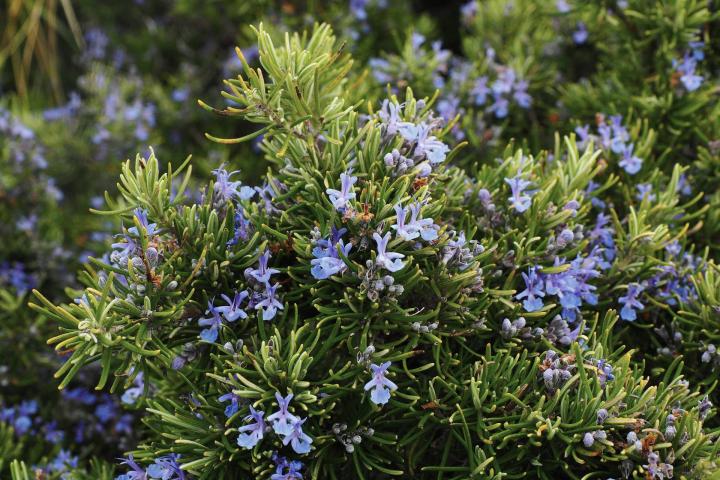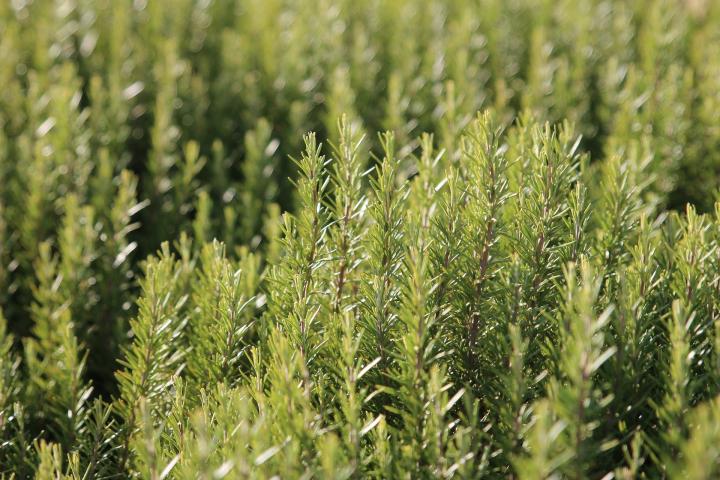
Planting, Growing, and Harvesting Rosemary Plants
Cooking Notes
Rosemary is wonderful with roast lamb, pork, chicken, pasta, stews, soups, vegetables (such as carrots), and sauces.
After drying, rosemary makes a lovely tea to aid digestion. You can also use it to infuse vinegar or olive oil or use it to flavor butter.
ADVERTISEMENT
Rosemary leaves can turn brown for a number of reasons. A common one, though, is due to too much or too little water. If your plant is in a pot, especially, make sure that it has adequate drainage and is not sitting in water. When watering, give it a good soaking, letting it drain through the bottom, but do not let it sit in water. Then, let the soil dry down to about 1 or 2 inches deep in the soil before watering again. Too much water can cause root rot, which can cause browning leaves. Insects and diseases, as well as cold temperatures or a sudden change in lighting (such as by taking it from bright light outdoors to a lower light level indoors) may also cause browning leaves. Make sure that your plant has enough light, and if you think it is getting too much water, let it dry out (drain off any excess water, if applicable). Hopefully, the plant will recover in a week or two.
Hi there, the whole plant leaves have turned brown. May I ask what should I do now? Uproot the whole plant? Or trim the areas that are brown and leave the plant in the pot?
Brought rosemary plants into the house last fall and have had them under growlamps (CFL) and they are thriving. Now that it is spring it's time to put them outside.
Any suggestions on the lowest temperature a plant can handle ?
We're getting 40 degree nights and the pots will be next to the building.
Varieties of rosemary will vary as to their cold tolerance. The trailing types seem to be more sensitive. In general, I am finding recommendations of the very lowest temperature as -3F, or other sources say 10F, 14F, or 23F. Some say bring it indoors when temperatures dip below 30F. These are wide ranges. To be on the safe side, if the plant will experience temperatures below 33F, then you should bring it in. 40s will probably be OK, especially next to a building. It might be a good idea, though, to gradually introduce the plants to the outdoors — such as 1 hour one day, 2 hours the next, etc., to help them get acclimated to the new conditions.
We moved into our house in NC 3 years ago and there was a huge rosemary bush that was so large being planted at the corner of the house, it reached around both sides. It was full and thick and tall. After we cut it back a bit, not too much, it started to die and never returned to it's former healthy state. All except one lower branch.It stayed fairly green.But as for the rest of the leaves they turned brown,then gray.We waited a full year and nothing! No new growth. So we cut of the dead branches hoping they would grow back healthy. NOTHING! The only thing left is that one bottom branch and it is slowly splitting away from the main trunk. WHAT SHOULD I DO????
It sounds like you may have root rot. It is caused by a fungus when the soil remains consistently damp. Root rot causes sections of the plant to die off. If you catch the rot early you can often save the plant by allowing the soil to dry and cut back on watering. Advanced root rot doesn’t have a cure.
My rosemary bush is in the ground. It is tall and wide. Will cutting it back destroy it?
my rosemary i got it 3 years go and now its starting to get flaky and the leaves are starting to come off and it looks like its turning into twigs is my rosemary dying what should i do?
You’re not the first person to have trouble overwintering rosemary. See this column for advice and please do ask Robin (who wrote the column) any additional questions: http://www.almanac.com/blog/gardening/gardening/overwintering-rosemary










